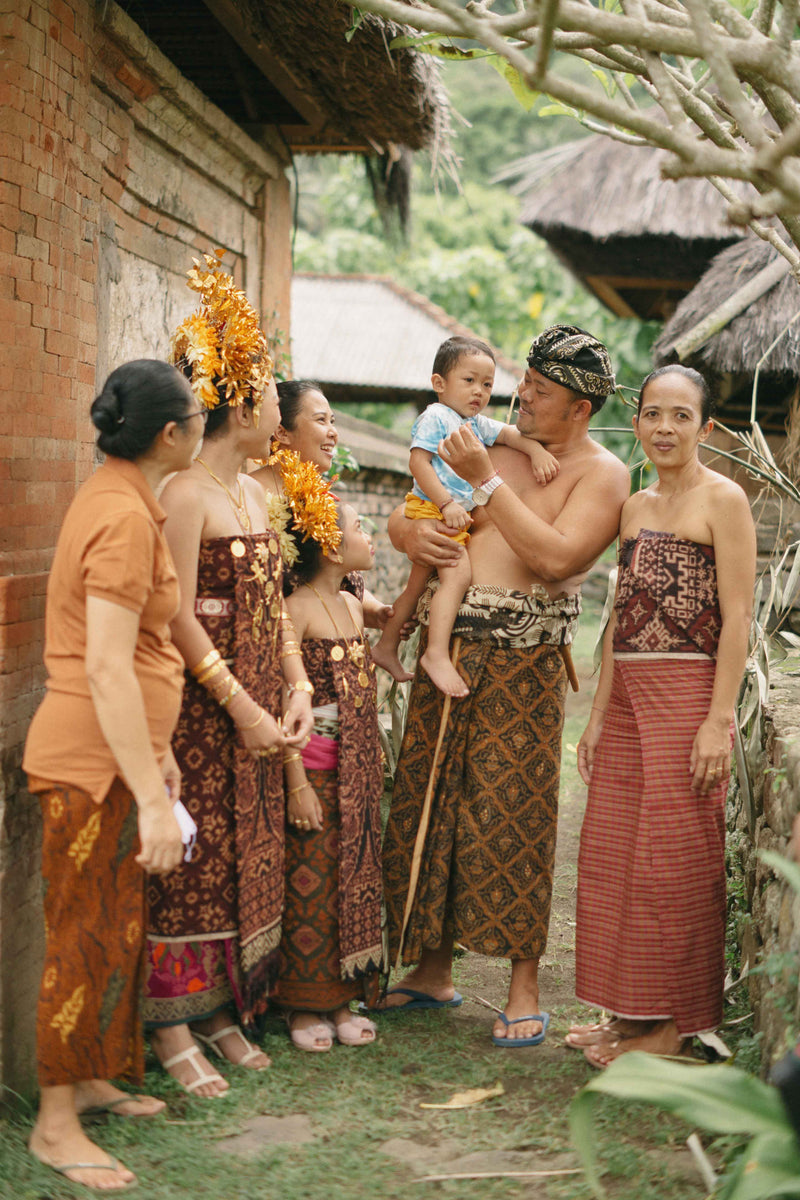In Sickness and In Health, In Life and Death: Geringsing of Tenganan.

Out of every textile of Southeast Asia, few are as avidly sought by collectors as the double ikat cloths of Tenganan village, Bali called Geringsing. The reason why they are so sought-after is the complex twofold ikat technique. The material reason is that double ikat is made only in two other places on earth: in Gujarat, India, and in Japan. But the awareness of what these Geringsing cloth represents is what makes it so profound.

Tenganan, located in the southeast of Bali island, is populated by Bali Aga who originated from the pre-Majapahit Bali kingdom of Pejeng. They’ve settled in Tenganan long before the occupation of Bali by the Hindu Javanese who arrived in the 15th as the Majapahit empire collapsed under Muslim conquest. The people of Bali Aga in Tenganan have maintained the same way of life, praising Dewa Indra and doing the notion that keeps the purity and integrity of life – through the way of life and rituals.

Geringsing appears in the rituals as well, it attests to the wearer’s entitlement in the Tenganan community and eligibility to take part in communal rituals. When Geringsing is worn, it becomes like a mantra to keep the balance of life as how it resembles in the motifs. There are 5 essential shapes found in the motifs of Geringsing. “Tapak Dara”or pigeon’s feet coming in + shape symbolizes balance, Swastika, flower, fortress, and Scorpion (that symbolizes Pura/temple).
All of these shapes combined creating the balance of life that is Jaga Satru and Tri Hita Karana. Tri Hita Karana is the philosophy of life held tightly not just by Bali Aga, but also by other Balinese. It is the balance between the Gods and Goddesses who live in the sky, humans who live in the earth, and in between them, Mandala Madya or Pawongan, the relation amongst humans.

The balance in Geringsing can also be seen from the colors. Red, Black, and Yellow appear in harmony on a piece of Geringsing. Red symbolizes fire, Black for water, and Yellow for air. If we can balance every element in our body, the people of Bali Aga believe that you would be healthy and far from sickness.


Geringsing accompany the Bali Aga people of Tenganan from life to death. They receive their first Geringsing at the ritual first hair cutting, and the next during the rite of passage where they are admitted to the village’s youth association, when they are carried on their father’s shoulder wrapped in a geringsing. In all subsequent ceremonies, such as the initiation rite, teruna nyoma, the teeth filing preceding marriage, and the wedding itself, the use of geringsing cloths is essential. At death, the deceased’s genitals are covered with a geringsing sash, defiling the cloth, which is then usually sold off. After death a purification ceremony, muhun, is held for the soul, symbolized by a palm leaf with sacred inscriptions, which is folded in a geringsing.

From cradle to grave, Geringsing has become the tool for these people to keep the balance of life and death.Through the rites of passage, they are able to sustain, nurture, and pass on values for the next life and the next generation.








